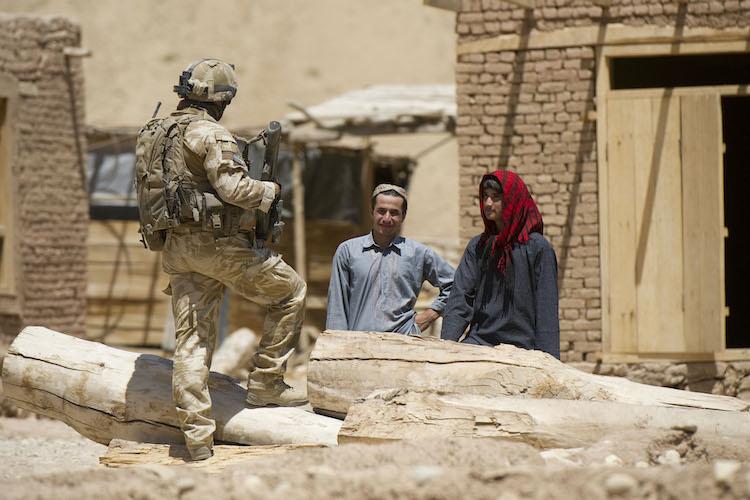Can the US come back to Afghanistan? The answer to this question is complex and multifaceted. The United States’ involvement in Afghanistan has been a decades-long issue that has undergone various phases, with the US deploying troops to the region to combat the Taliban, train Afghan security forces, and provide aid and assistance to the Afghan people. After the US’s withdrawal from Afghanistan, many wonder whether it can return to the region in the future. In this article, we will explore the various perspectives on this question, including the historical context of the US’s involvement in Afghanistan, the current situation in the country, and the potential implications of a future US presence in the region.
Historical Context
The US has been involved in Afghanistan since the 1980s, when it provided support to Afghan resistance fighters battling the Soviet Union. Following the 9/11 attacks, the US returned to the region with a mission to dismantle the Taliban, who had provided safe haven to al-Qaida. This resulted in a two-decade-long conflict that saw the US deploy tens of thousands of troops to the region, alongside NATO and Afghan security forces.
In 2020, the US and the Taliban signed an agreement that set the terms for a US withdrawal from Afghanistan by May 2021. The agreement did not release two classified annexes that outlined the Taliban’s commitments to the US. However, the Taliban did agree to engage in peace talks with the Afghan government, which were aimed at ending the conflict and facilitating a political settlement in the country.
Factors affecting the US return
The US return to Afghanistan depends on several factors, including the security situation, the political environment, and the international community’s support.
Current Situation
As of 2023, the US has completed its withdrawal from Afghanistan, leaving behind a fragile security situation that has been further complicated by the Taliban’s return to power. The Taliban swept to power in August 2021 following the withdrawal of US troops, and since then, the country has experienced significant turmoil, with reports of human rights abuses and violence against women.
The situation in Afghanistan is complex, and there are concerns that the country may once again become a safe haven for terrorist groups if the Taliban fails to maintain security and stability in the region. Some experts have argued that the US may need to maintain a military presence in the country to prevent the re-emergence of terrorist groups.
Political environment
The political environment in Afghanistan is also a significant factor. The Taliban now control the government, and the US would need to assess whether it can work with the Taliban or if it needs to support an opposition group. The US would also need to determine if the current government is legitimate and if it has the support of the Afghan people.
International community support
The international community’s support is critical for the US return to Afghanistan. The US would need to work with its allies and partners to ensure that they are on board with the US return and that they provide the necessary support, including financial and military assistance.
What it would take for the US to return
If the US were to return to Afghanistan, it would need to undertake several measures to ensure success.
Political engagement
The US would need to engage politically with the Taliban or any other opposition group to ensure a stable and peaceful transition of power. The US would need to support the formation of an inclusive government that represents all Afghan people and is committed to democratic principles.
Security assistance
The US would need to provide security assistance to Afghan security forces to ensure their capabilities and capacity to maintain security in the country. This could include providing training, equipment, and other forms of assistance.
Humanitarian assistance
The US would need to provide humanitarian assistance to the Afghan people, who have been severely affected by the conflict and the Taliban takeover. This could include providing food, shelter, and medical assistance.
Economic assistance
The US would need to provide economic assistance to Afghanistan to help rebuild the country’s infrastructure and economy. This could include providing financial assistance, investing in key sectors such as agriculture, and encouraging private investment.
Implications of a Future US Presence
If the US were to return to Afghanistan, it would have significant implications for both the country and the region. A US presence in the region could help stabilize the country and prevent the resurgence of terrorist groups. However, it could also exacerbate tensions and further destabilize the region, particularly if the US is perceived as an occupying force.
Furthermore, there are significant financial costs associated with a military presence in the region, and it is unclear whether the US public would support another intervention in Afghanistan. The US has already spent over $2.2 trillion on the conflict in Afghanistan, and there are concerns that another intervention could lead to further expenditures without clear outcomes.
Conclusion
The question of whether the US can come back to Afghanistan is complex and multifaceted. While some argue that the US should maintain a military presence in the region to prevent the resurgence of terrorist groups, others warn of the potential for further destabilization and financial costs associated with another intervention. As Afghanistan continues to grapple with a fragile security situation and the Taliban’s return to power, it remains to be seen whether the US will seek to re-engage with the country in the future.


